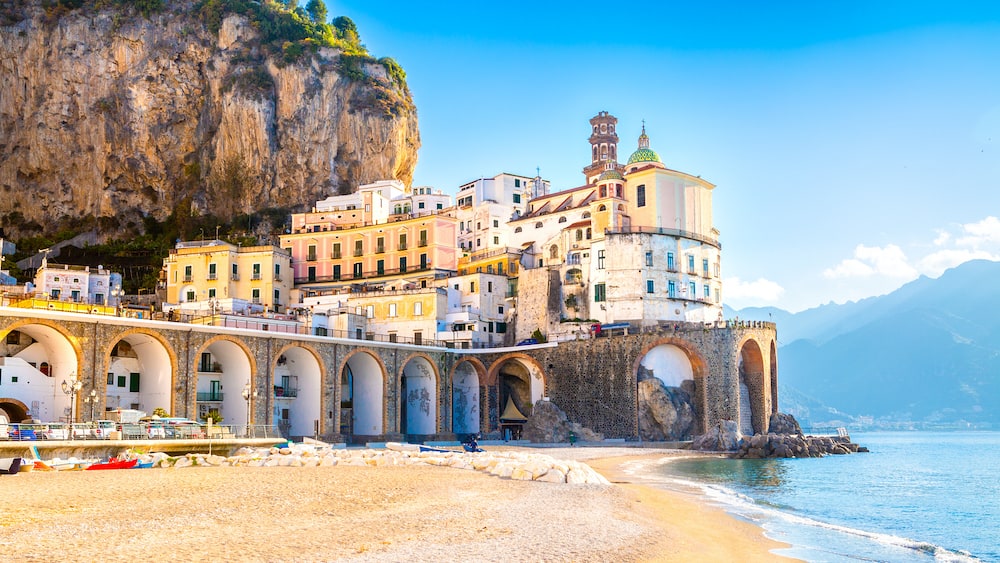48 hours in Florence – A 2 day Itinerary
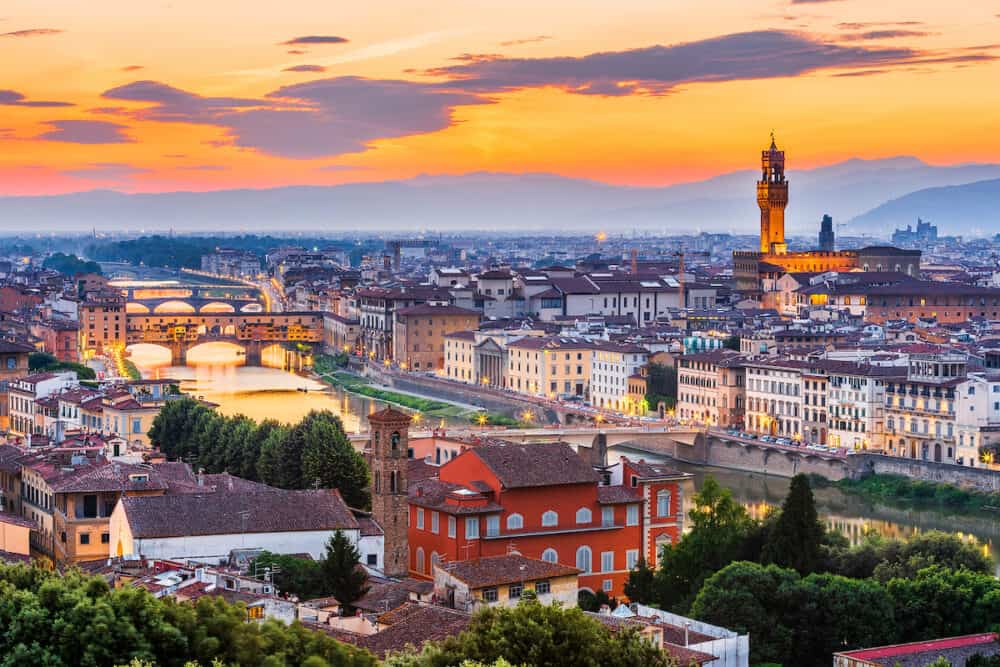
This is what dreams are made of… Strolling through white-washed streets, as an elderly man plays the cello, making you feel like a main character.
You sit in a woven chair at a cute cafe overlooking the piazza, with an Aperol cooling your tongue as you look on serenely at the people meandering, chatting and perhaps dancing their way through Florence.
This is the ultimate 2 day itinerary for Florence that will cover all of Florence’s greatest attractions as well as the city’s most secluded things to do, which will have you feeling like a local in no time. Prepare yourself to see the Duomo, explore the Uffizi Gallery, see Michelangelo’s “David”,
visit the Palazzo Vecchio, explore the Oltrarno neighborhood, check out the Pitti Palace, view the Ponte Vecchio, wonder at the Basilica di Santa Croce and gorge yourself at the San Lorenzo Market.
Best time to visit
The most popular time to head to Florence is during the summer months (June to August) when the weather is balmy and sunny. Many tourists flock to the city to see the famous art and architecture which also makes this the busiest and most expensive time of year.
If you prefer to avoid the crowds and enjoy cooler weather, then the spring (April to May) and fall (September to October) months are excellent times for you to visit.
The weather is usually calm, and the crowds are thinner, making it less stressful and more enjoyable when exploring the city’s attractions. The shoulder seasons also offer lower accommodation rates and cheaper flights compared to the peak season.
Plan your trip?
Avoid hidden fees in the exchange rate while withdrawing from millions of ATMs abroad, paying in restaurants and shops, and buying your accommodation and flights using the Wise Card. You can hold up to 40+ currencies at once to spend in in over 150 countries, and convert them in real time with the free Wise app.
Need help planning your trip from start to finish? Check out these helpful links:
- Cheap flights
- Savings on accommodation from hostels to luxury hotels
- Affordable car rental options
- Affordable sightseeing tours and day trips
- Travel Adapter – All in one so you don’t have to carry a bunch around
This post contains some affiliate links for your convenience. Click here to read my full disclosure policy. You can also read our content/editorial policy here.
Where to stay in Florence for 2 Days in Florence
Three of the best towns to stay in while visiting Florence are:
- Fiesole: This town is perched on a hilltop that overlooks Florence’s beautiful rooftops and unique street pattern. Fiesole is known for its Roman ruins, including a well-preserved amphitheater and thermal baths. The town has a relaxed atmosphere whilst also being centrally located, making it an ideal destination to stay at.
- San Gimignano: This is a medieval inspired town that was dubbed a UNESCO World Heritage site and is famous for its well-preserved towers that date back to the 14th century. San Gimignano is filled to the brim with tradition, winding cobblestone streets, excellent restaurants, and wonderful views of the surrounding countryside.
- Siena: This is a town that focuses on retaining its history in every aspect from architecture, to activities through to food. It is located about an hour’s drive from Florence and is known for its medieval architecture, including the Piazza del Campo, the Palazzo Pubblico, and the Cathedral of Siena. Siena is also famous for its native cuisine, including pasta dishes, cheese, and wine.
Overview Of 2 Days In Florence Itinerary
Day 1 in Florence
- The Duomo
- Explore the Uffizi Gallery
- See Michelangelo’s David
- Visit the Palazzo Vecchio
- Santa Maria Novella
- Wander through the Boboli Gardens
Day 2 in Florence
- The Oltrarno Neighbourhood
- Visit the Pitti Palace
- See the Ponte Vecchio
- Ponte Santa Trinita
- Visit the Basilica de Santa Croce
- Explore the San Lorenzo Market
Day 1 in Florence
Today is going to be filled with all of the cultural intricacies that encompass a local Florentine. The best way to understand the city you’re visiting is to learn about the city’s past. So let’s begin with one of the most famous landmarks native to Florence…
The Duomo
Kicking off this Italian extravaganza, we’re heading to The Duomo bright and early to avoid the crowds, get those insta picks and marvel at the cascading sunlight as it glows golden over the dome-shaped roof of this architectural masterpiece.
The Cathedral of Santa Maria del Fiore, also known as the Duomo, is one of the most iconic landmarks in Florence. You can view it from the ground or adventure to the top of the dome to view the city below from a unique angle.
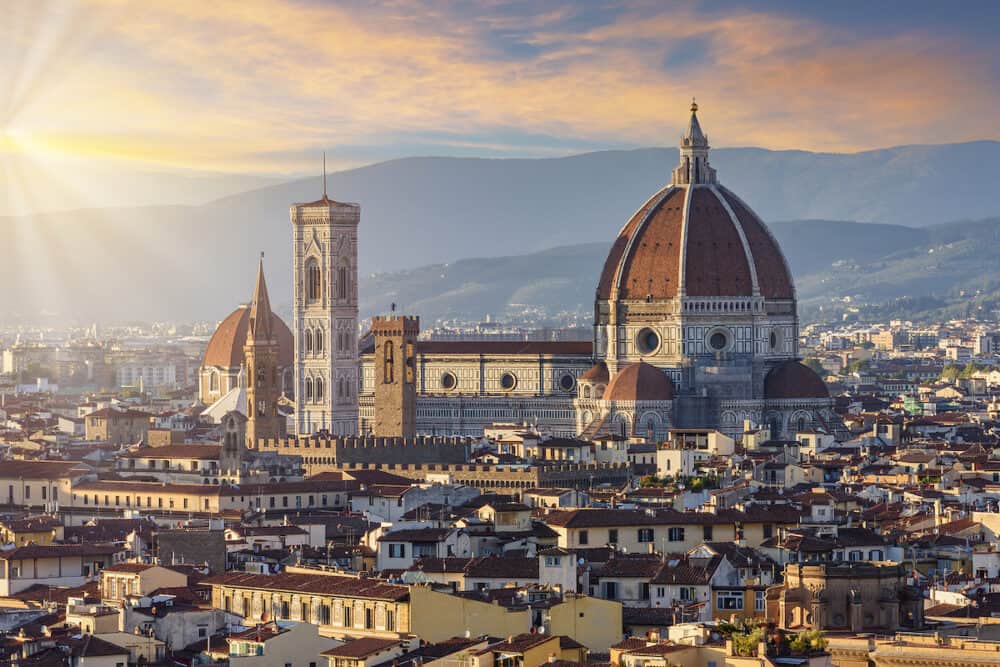
Explore the Uffizi Gallery
Plan to spend the next part of your morning at the Uffizi Gallery. In fact, set aside ample time because you’ll most likely lose track of time while being absorbed into the history, sculptures and art that the Uffizi Gallery has to offer.
The Uffizi Gallery houses an extensive collection of Renaissance masterpieces, including works by some of the greatest artists of all time such as Michelangelo, Botticelli, Leonardo da Vinci, and Raffaello.
You’ll want to purchase tickets in advance to avoid long lines, as the Uffizi Gallery is one of the most popular attractions in Florence. Guided tours are also available for those who want to learn more about the history and significance of the artwork on display.
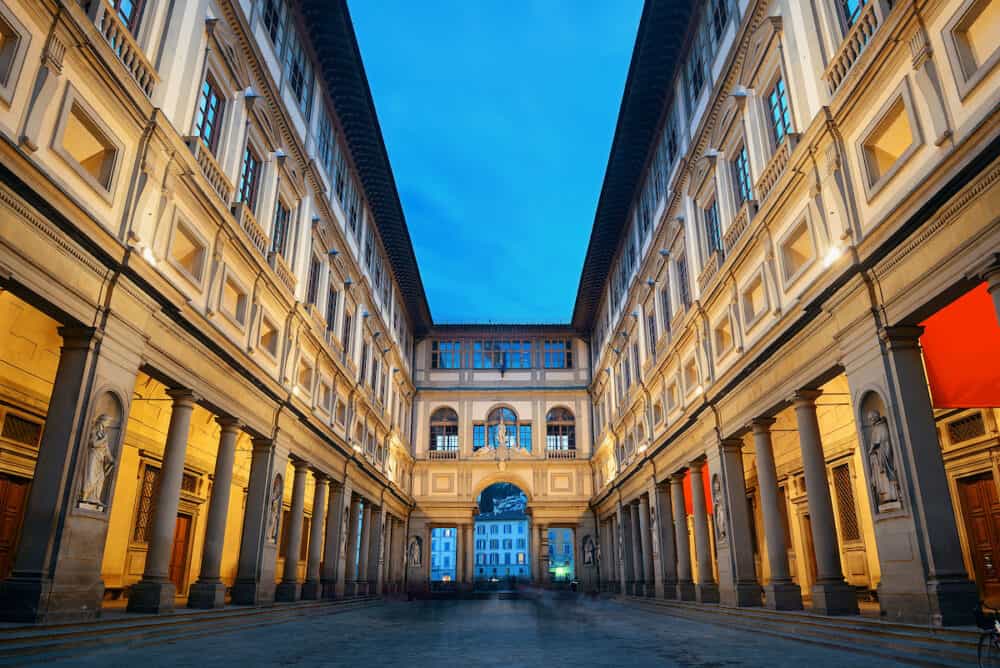
See Michelangelo’s David
While we’re on the topic of art and sculptures, no trip to Florence would be complete without seeing Michelangelo’s David.
To view it, you’ll go to the Accademia Gallery where you can marvel at the statue up close and appreciate the intricate details, such as the veins in David’s hands and the way his muscles are flexed.
The statue is considered a masterpiece of Renaissance art and is an important symbol of the city of Florence.
For those who love learning about the history of a city and taking a deep dive as an archaeologist for the day, you’ll really enjoy the sprawling historical remnants scattered around Florence.
Each one is different and although this guide does mention a bunch of palaces and museums, each one is worth visiting as no two places are alike. You’ll see and learn something completely different at each location.
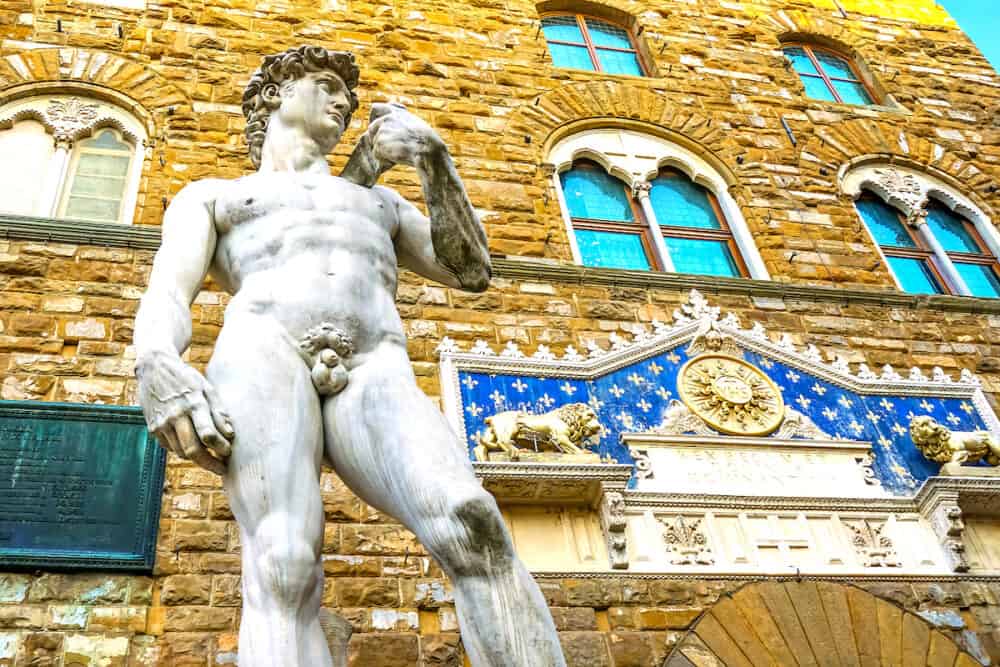
Visit the Palazzo Vecchio
The Palazzo Vecchio was originally built in the 14th century as the seat of government for the Republic of Florence, and it has played a significant role in the city’s history ever since.
Today, the Palazzo Vecchio is a popular tourist attraction, offering visitors the opportunity to explore its rich history. And yeah, this place makes you feel as though you were born in the wrong era after stepping into its 14th century prowess.
Once again, you’ll be able to climb to the top of the Palazzo’s towers and be able to take in Florence’s landscape which is dotted with terracotta rooftops and secret streets.
Inside the Palazzo Vecchio, you’ll be able to explore a range of rooms and galleries, each showcasing a different aspect of the palace’s history. The Salone dei Cinquecento, for example, is a vast hall that was once used for public meetings and ceremonies.
It is decorated with frescoes and paintings by some of the most famous artists of the Renaissance, including Leonardo da Vinci and Michelangelo (but you would’ve already seen his greatest work today).
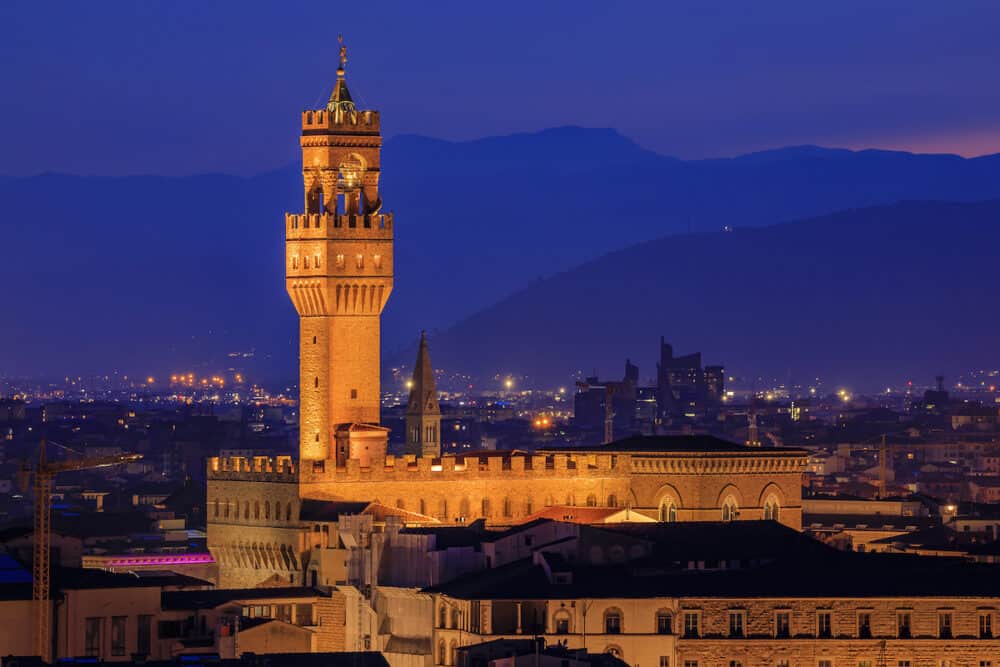
Santa Maria Novella
The Basilica di Santa Maria Novella is a church that is considered one of the most important examples of Gothic and Renaissance architecture in Florence. The church was built in the 13th century and has been decorated with Italian marble sculptures.
It also features a large rose window that is one of the most iconic features of the building’s facade. As well as artworks from some of the most famous Renaissance artists, including Masaccio, Filippino Lippi, and Ghirlandaio.
Santa Maria Novella is also home to an extensive museum that houses a collection of artworks and religious artifacts.
The museum includes works by famous Renaissance artists such as Botticelli, Giotto as well as a variety of religious objects, including chalices, reliquaries, and vestments.
Here’s a tip: To experience one of the most serene spots in Florence, look out for the Chiostro Verde, which is a beautiful cloister that dates back to the 14th century and is adorned with emerald green, terracotta tiles.
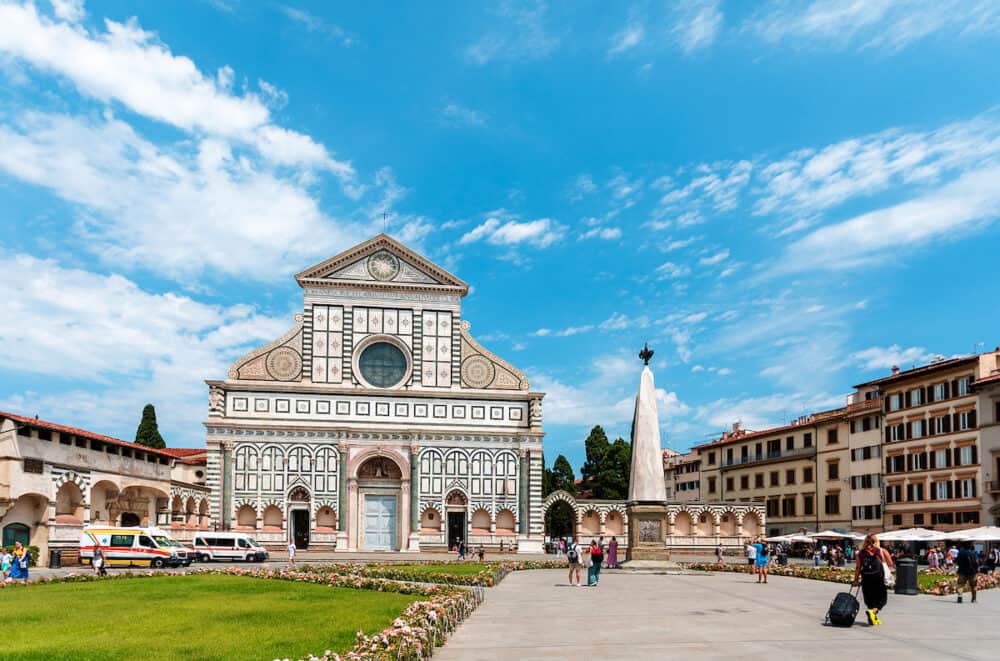
Wander through the Boboli Gardens
After an information packed day, let’s take a casual stroll through Boboli Gardens to reflect. Humanity has come so far since the 14th century.
Amongst the hustle and bustle, we forget to appreciate these quiet times and enjoy the last rays of the European sun as they set upon the manicured lawns of Boboli Gardens.
The Boboli Gardens are located behind the Pitti Palace in Florence, Italy. The gardens were created in the 16th century for the Medici family, who ruled over Florence during the Renaissance period and are filled with plants, flowers, statues, and fountains spread across an area of over 45,000 square meters.
These aren’t just your average flower beds and shrubs either. The gardens are immaculately manicured, making any onlooker believe that each blade of grass and leaf was cut individually.
Each area is dedicated to a certain era of Florenian culture. But no more spoilers, go experience it for yourself!
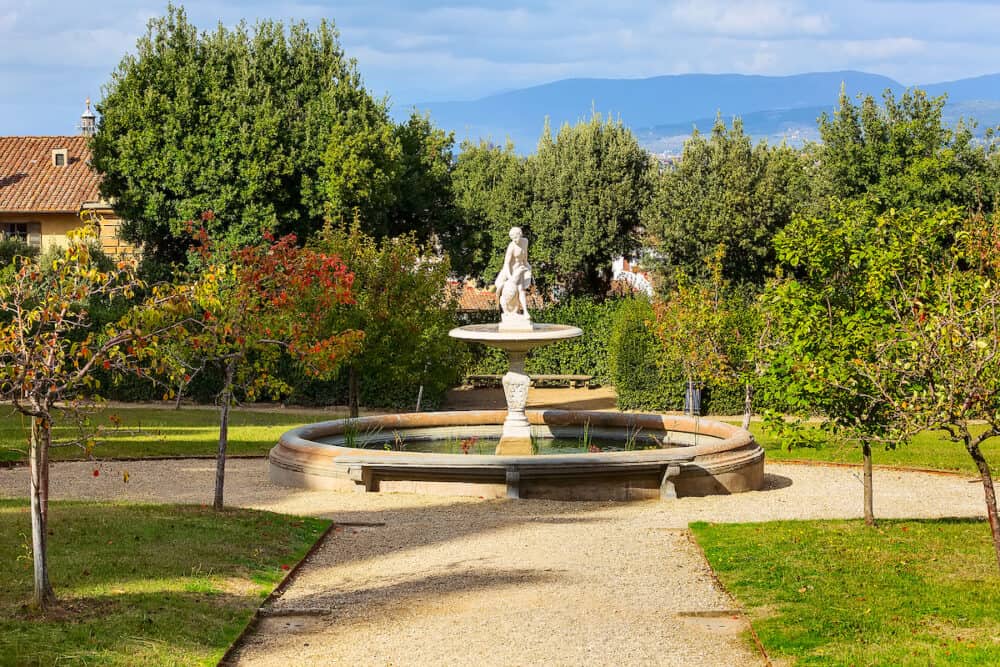
Day 2 in Florence
Yesterday was for learning, today is for experiencing. Starting off with exploring the Oltrarno neighborhood.
The Oltrarno neighborhood
Steeped in deep history, aesthetic Italian stone and secretive nooks around every corner, the Oltrarno neighborhood encompasses the best of Florence and everything it had to offer.
As you wind your way through the streets, you’ll come across ancient churches, the Vasari corridor, and art from the 15th Century. You’ll also get to experience the artisan traditions of the Oltrarno.
You’ll also notice some familiar sites along the way such as the beautiful Boboli Gardens, which are located behind the Palazzo Pitti, the Basilica di Santo Spirito, piazza della signoria and the piazza della Repubblica.
Are all of those piazza’s that sound like “pizza” making you hungry? Good, because we’re heading off to the Piazza Santo Spirito. Which is a beautiful square that is considered one of the liveliest and most authentic parts of Florence.
The square is home to a weekly market on Sundays, where visitors can browse a range of antiques, vintage clothing, handmade crafts and artisan, local, Florentine cuisine.
You’re going to need to grab some warm, freshly baked sourdough from one of the artisanal bakeries around the neighborhood because we’re about to run through the corridors of the Pitti Palace next.
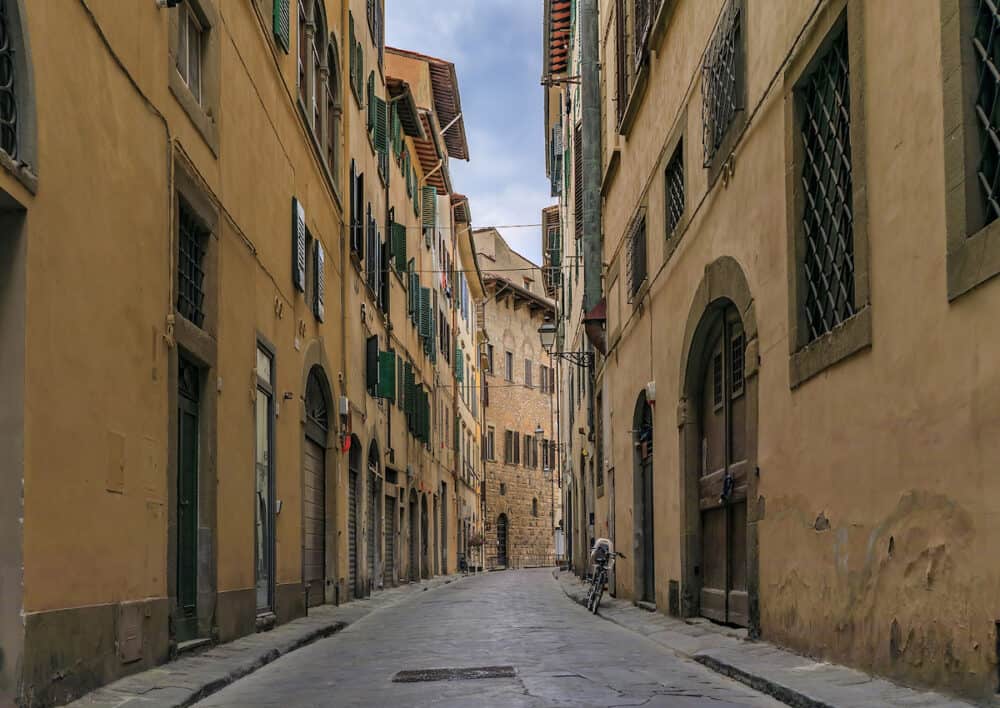
Visit the Pitti Palace
With adorned ballrooms, golden balconies, rich red tapestries, paired ceilings, crystal chandeliers, and intricate carvings, the Pitti Palace gives its visitors a taste of what it would’ve been like to roam around a palace of wealth from the 15th century.
The palace was later purchased by the powerful Medici family in the 16th century and expanded to its current size and grandeur.
The Palace still retains its Baroque and Renaissance influence whilst also showcasing works by Raphael, Titian, and Caravaggio. Another highlight of the Palazzo Pitti is the Royal Apartments, which were once the living quarters of the Medici family.
The apartments feature a range of beautifully presented rooms, including the mesmerizing Gallery of Mirrors, which display a series of mirrors that reflect the light and create a dazzling effect.
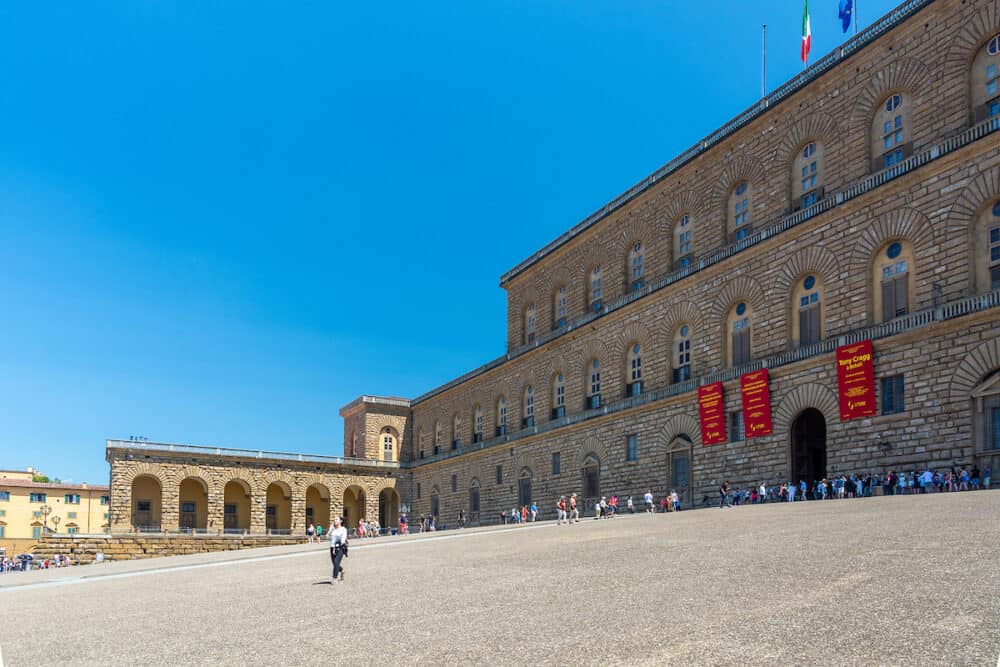
See the Ponte Vecchio
The Ponte Vecchio is a closed-spandrel arch bridge in Florence, Italy. Ponte Vecchio, which translates to “Old Bridge” in Italian, is one of the most iconic landmarks in Florence and connects the Oltrarno and city center neighborhoods.
This bridge is special to the Florence nation as it was the only bridge built across the Arno in Florence until 1218.
Yep, if you walk across it, you’ll be walking across a bridge that was built and then crossed by millions of others dating back to the Renaissance and further.
And as you walk across the Ponte, don’t forget to take a look left and right as the two terraces open out onto a vast and incredible view of the river that runs through Florence. It was originally used as a bridge for merchants to sell their goods.
The bridge has retained this tradition and is home to a range of artisan shops, souvenirs and jewelry stores which are located in small stone buildings that are cantilevered out over the river.
Visit during the day for the shopping experience or pop over to witness the bridge illuminated at night. Walking along the bridge is a wonderful, romantic activity for all you love birds out there due to the soothing ambience and flowing water.
Sticking with bridges, we’re making sure we cover all of the greats and visit the most unique bridges throughout Florence. We’ll be crossing the Ponte Santa Trinita next.
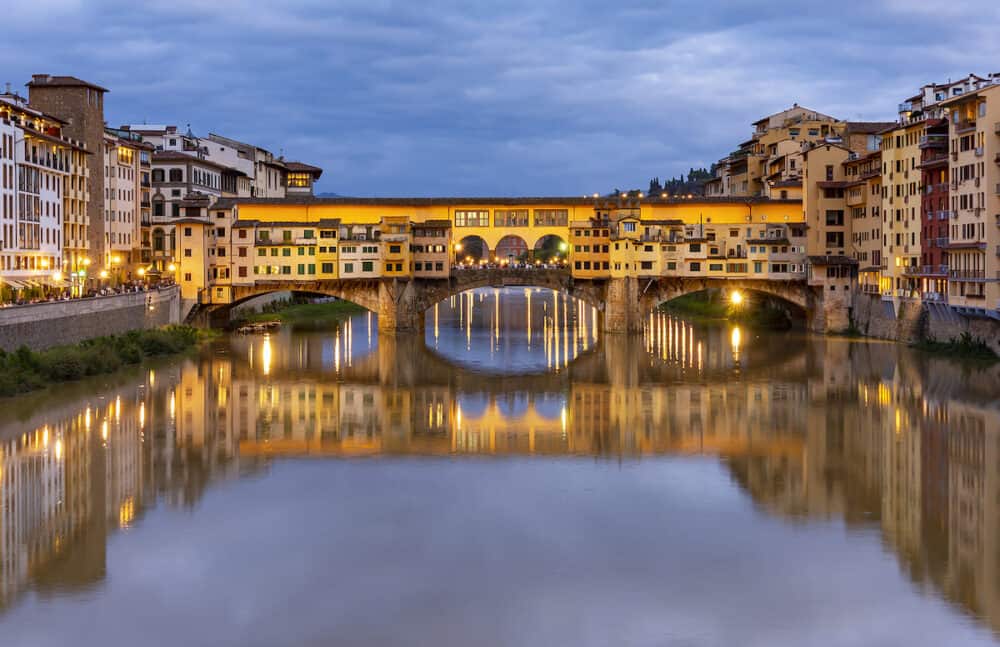
Ponte Santa Trinita
The bridge was originally built in the 13th century and was rebuilt in its current form in the mid-16th century. It was designed by architect Bartolomeo Ammannati, who drew inspiration from classical architecture and the works of Michelangelo.
The bridge features three elegant arches and is decorated with a number of statues and reliefs, including four statues of Roman gods and goddesses. Who knew we’d be seeing a bit of Greek/Roman influence all the way in Florence?
You’ll imagine you’re in a fairytale after seeing the banks of the river which are lined with aesthetic buildings naturally built with Florence’s terracotta and marble influence in mind.
For all the romantics, here’s another reason for you to take a walk along the Ponte Santa Trinita… Legend says that if you kiss your beloved while standing on the bridge at sunset, your love will last forever.
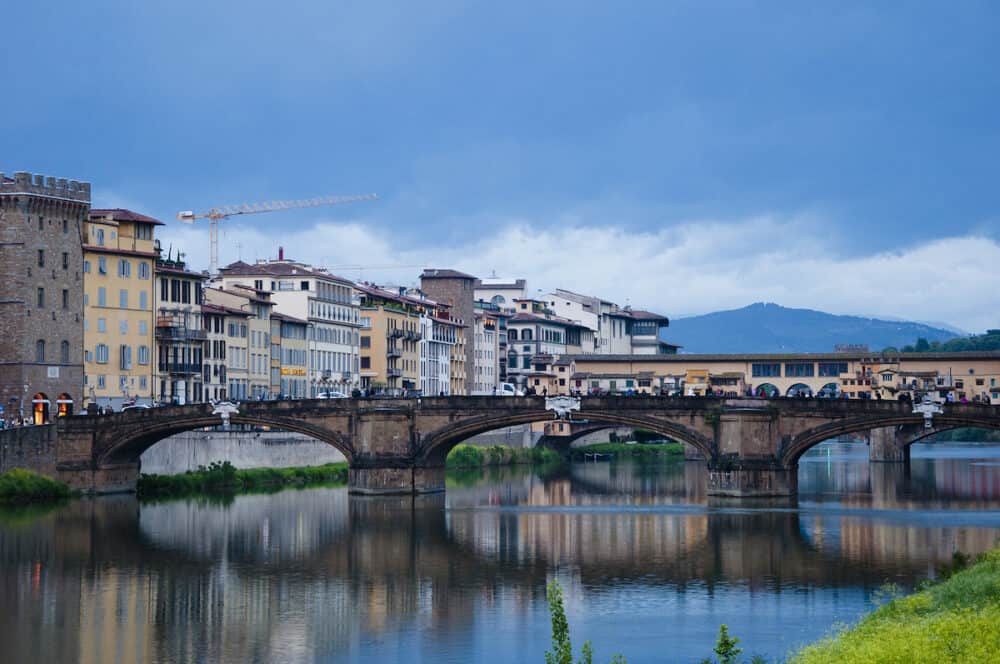
Basilica de Santa Croce
This Gothic- Renaissance revival is one of the most beautiful Basilica’s/ chapels to see in Italy due its perfect symmetry.
The basilica was designed with perfection in mind, and that certainly was executed. It is one of the largest churches in the city and is commonly known as “The Holy Cross”.
The church was founded by the Franciscan order in the 13th century and has since been expanded and renovated several times.
It is considered one of the most important churches in Florence and is home to several notable tombs and chapels, including the Cappella dei Pazzi, which was designed by Brunelleschi, and the Cappella Bardi, which features stunning frescoes by Giotto.
You’ll be able to admire from the inside and out. If you’re a little short on time, doing a walk by is a great alternative.
If you’d prefer to venture further than the identical doorways, you’ll find numerous tombs which house some of Italy’s most famous artists and writers, including Michelangelo, Galileo, Machiavelli, and Dante.
The Basilica di Santa Croce also hosts a range of religious services and events throughout the year, including concerts and special masses – Which all visitors are welcome to attend so that they can experience the rich spiritual traditions of the Franciscan order and the city of Florence.
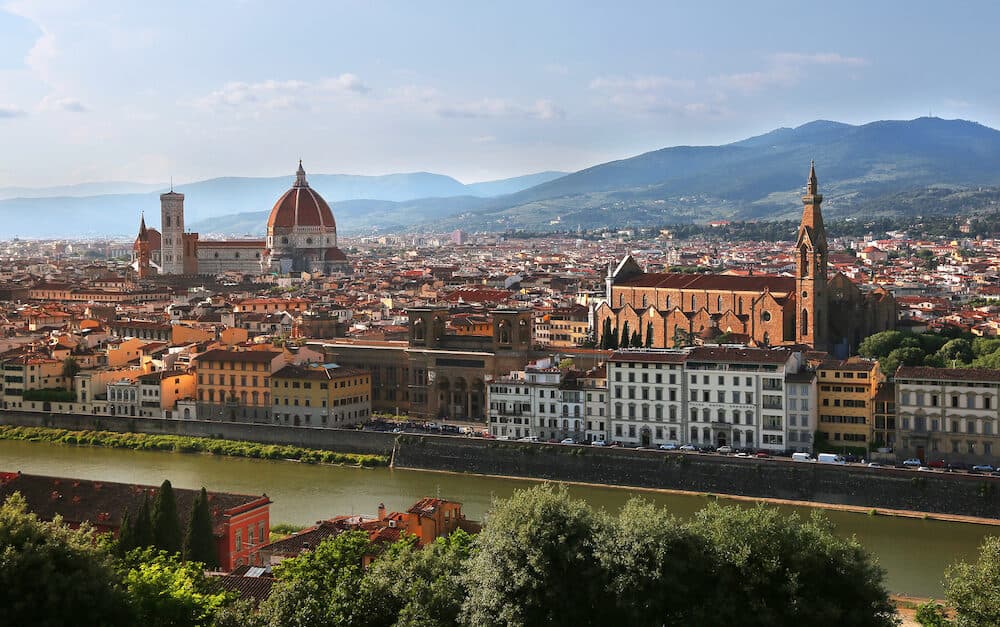
Explore the San Lorenzo Market
Onto all things sweet, savory, salty and spicy at the San Lorenzo Market which has an extensive selection to choose from. You’ll want to go on an empty stomach for this one. For this itinerary, this is our last stop… Just in time for dinner.
The market is spread out over two main areas, the indoor Central Market and the outdoor street market. The Central Market is a large covered hall where you can find a wide variety of fresh food products, including meats, cheeses, fruits, vegetables, and seafood.
There are also a number of vendors selling spices, oils, and other specialty items. The Central Market is a great place to shop for fresh ingredients if you’re planning to cook your own meals while in Florence.
The outdoor street market is located just outside the Central Market and features a wide range of products, including clothing, leather goods, jewelry, and souvenirs.
There are also a number of food vendors selling snacks, drinks, and street food. The atmosphere is lively and colorful. Don’t forget to try out your bargaining skills with the local store owners.
The San Lorenzo market is also famed for its high quality leather goods, which are more affordable than most may think.
Be prepared to experience a market that moves and pumps with life, music and tantalizing food all day and into the night.
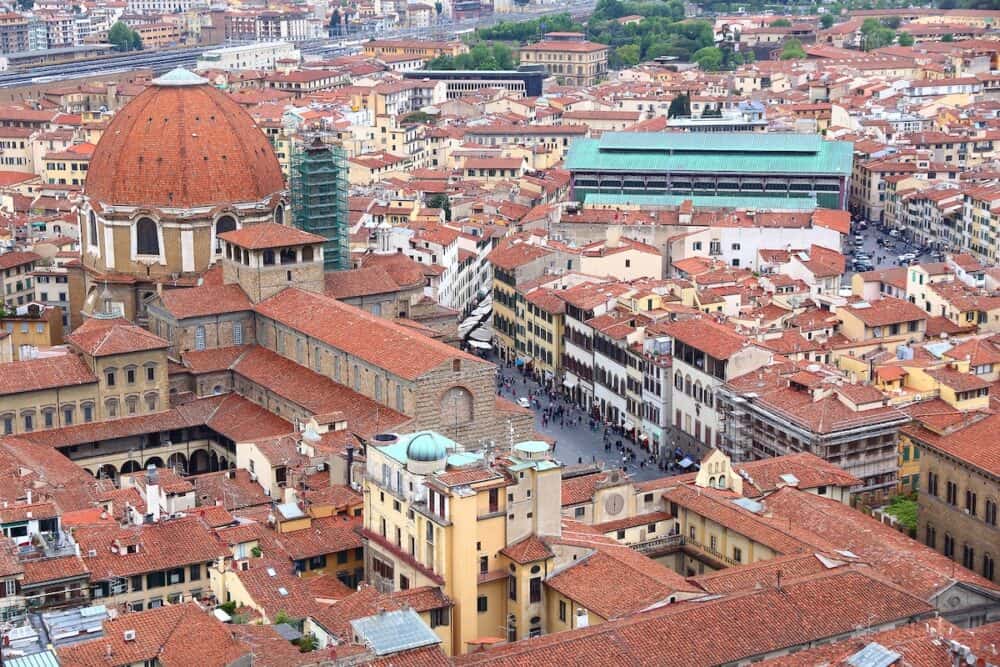
Fairytale Florence. Nope, that’s not a cliché. That’s exactly what visiting Florence is like. You’re suspended in a fairytale, surrounded by palaces, paintings, ballrooms, marble, crystal, romantic night walks, glittering facades and food fit for a king.
Florence is for those who love the combination of history, adventure, architecture, and art. It’s for those who are happy to head back to the basics for a bit and reconnect with simplicity done magnificently.
Recommended tours in Florence
- Skip the line: Uffizi and Accademia Small Group Hidden Highlights Walking Tour
- Pastamania – Pasta making class
- Skip the line Florence Tour: Accademia, Duomo Climb and Cathedral
- Skip-the-Line Florence Highlights and David Walking Tour
- Duomo Skywalk – Florence Heaven
- Florence Cooking Class: Learn How to Make Gelato and Pizza
- Electric Cart Tour Florence
- Uffizi + David & Accademia Tour Exclusive
- The Duomo Complex and Its Hidden Terraces
If you’d like to save it for later, please save it to Pinterest.
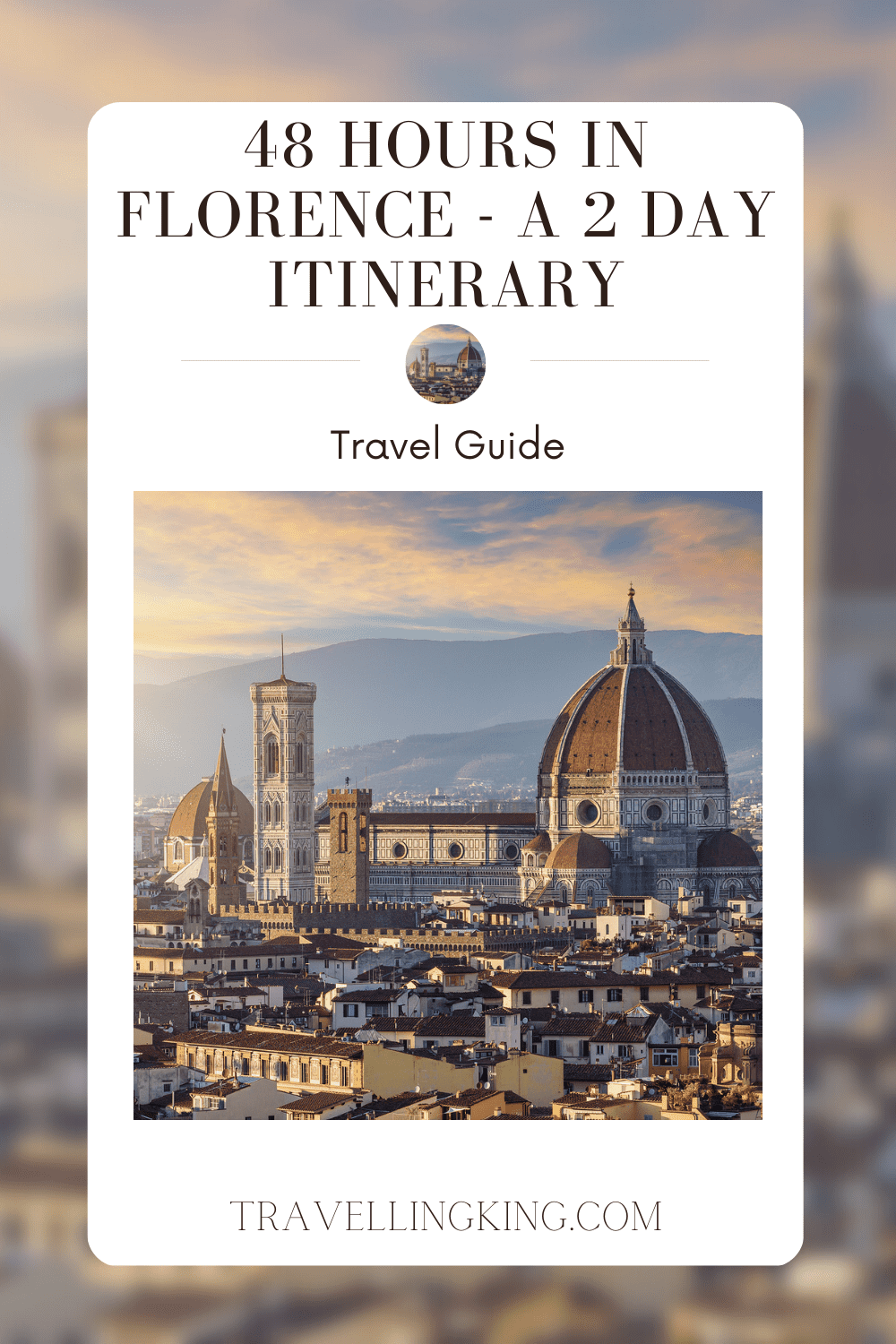
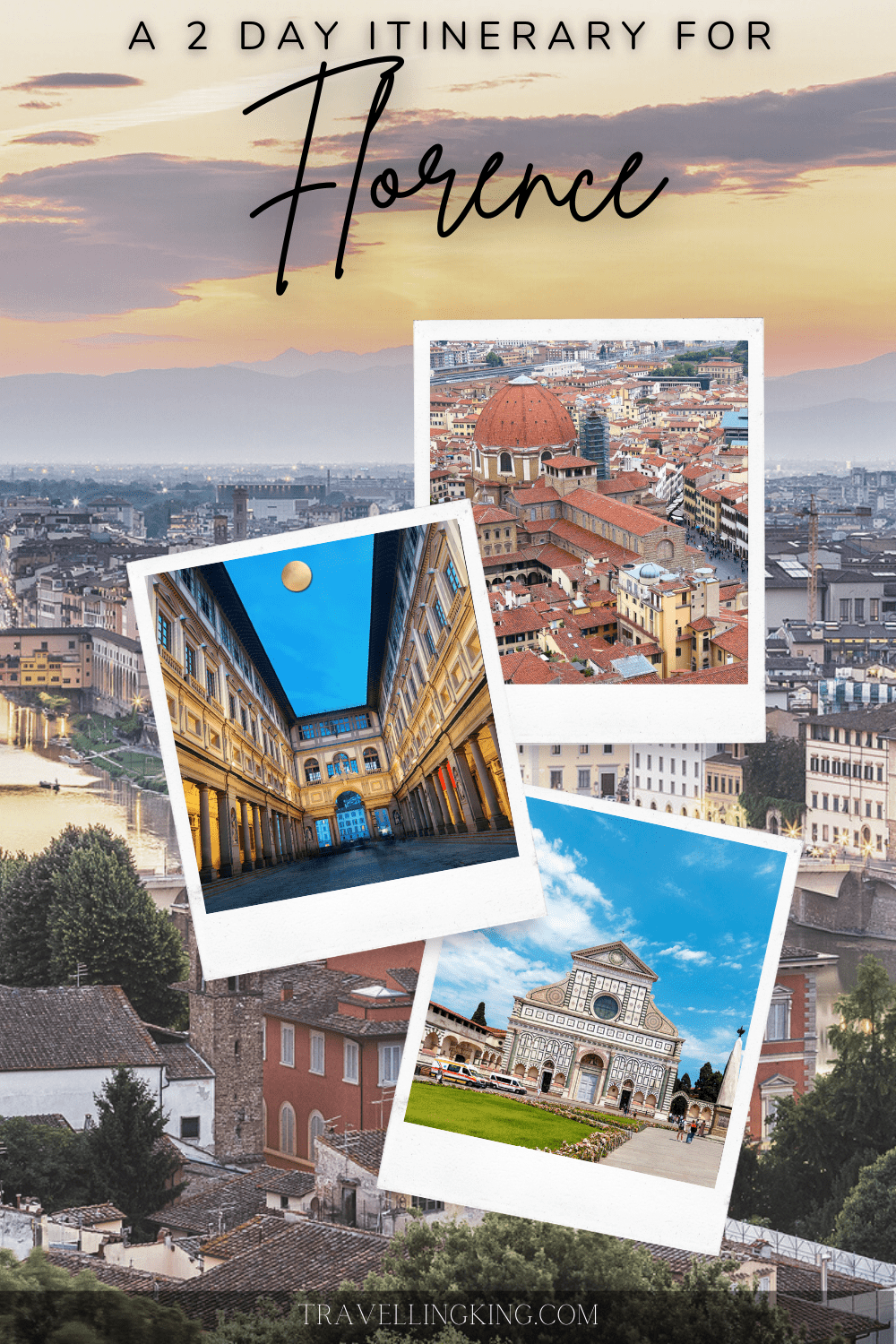


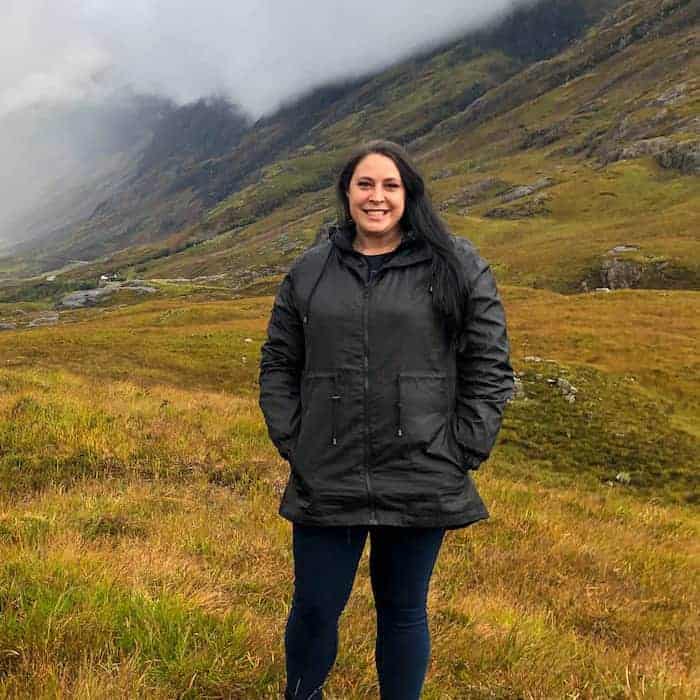
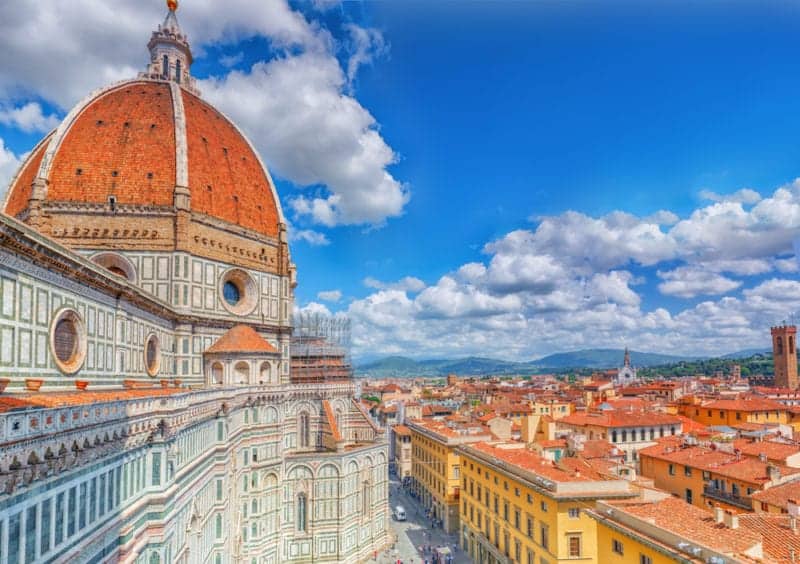
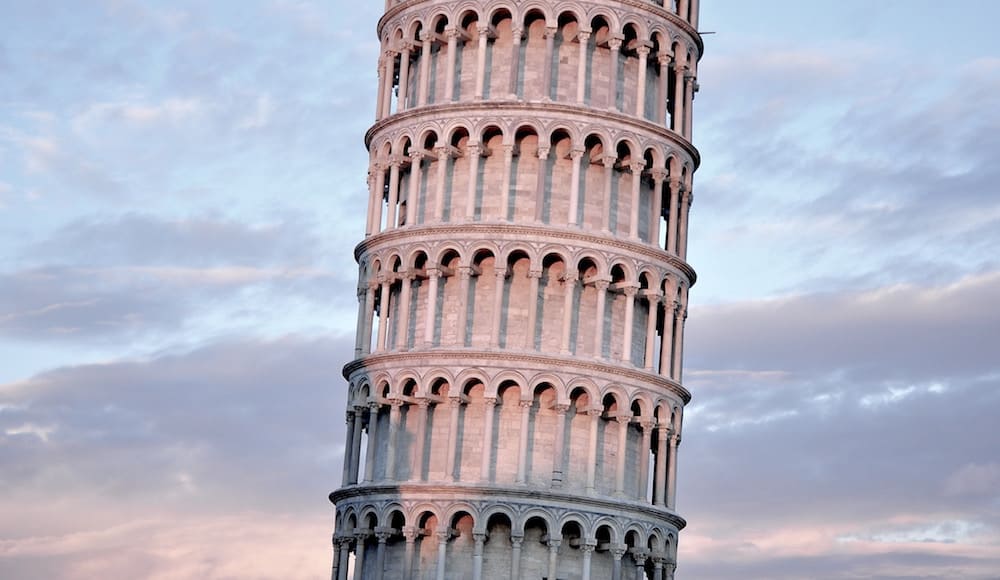
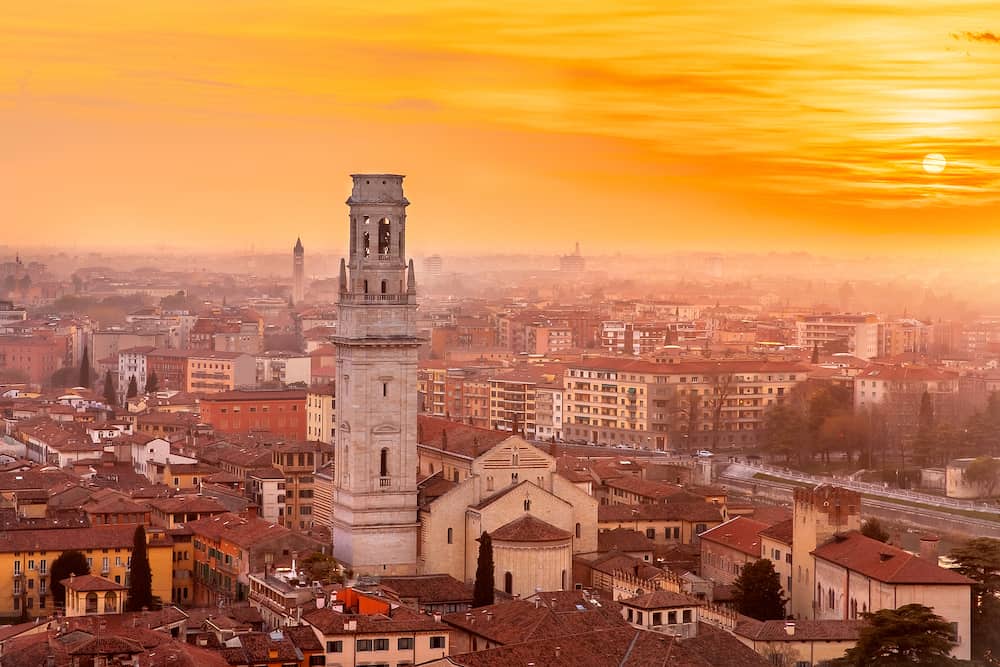
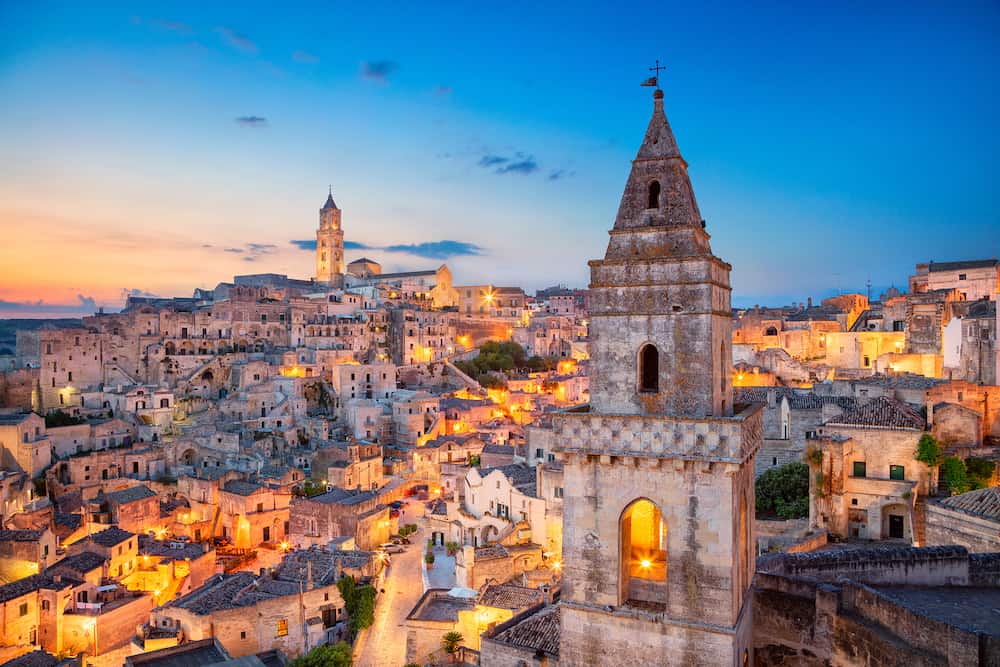
![Where to stay in Milan [Best Places to Stay for 2024]](https://www.travellingking.com/wp-content/uploads/2023/03/Milan-Milan-gothic-cathedral-at-sunrise.jpg)
